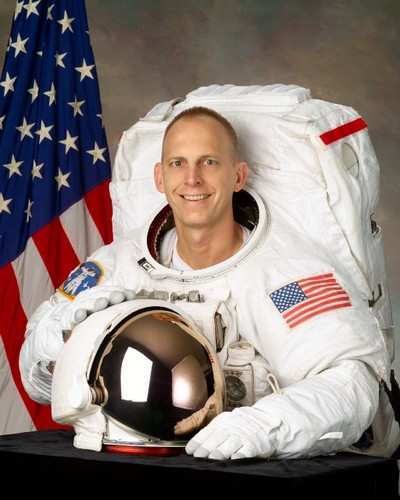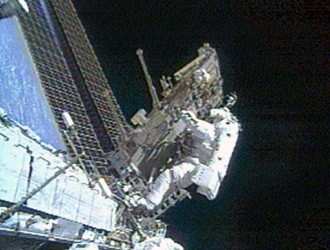Home for the holidays has a whole new meaning when home is the
planet you returned to just last week. But that is what astronaut
Clay Anderson has done, landing Nov. 7 after five months in orbit
aboard the International Space Station, just in time for a holiday
season with his family.

"Seeing my family after several months aboard the station has
taught me a new meaning of the word 'thanksgiving,'" Anderson said.
"We had a tremendously successful expedition during my time aboard
the station, and it is really heartwarming to be able to complete
my mission, come back to Earth with a great crew and relax and
enjoy the season with loved ones."
Anderson served as part of the Expedition 15 crew aboard the
station after launching on mission STS-117 aboard the space shuttle
Atlantis on June 8, 2007. While aboard the station, Anderson
conducted several spacewalks and helped relocate the shuttle's
docking port using the station's robotic arm. His work has helped
the station begin the first expansion of its living and working
space in more than six years.
Anderson returned to Earth aboard the shuttle Discovery, which
completed a challenging solar array repair and attached the Harmony
connecting module to the complex. The additional power from the
arrays and the new Harmony's berthing ports will allow
international science labs from Europe and Japan to be launched
during the next few months.
Anderson joined the Johnson Space Center in 1983 in the Mission
Planning and Analysis Division where he performed rendezvous and
proximity operations trajectory designs for early Space Shuttle and
Space Station missions. In 1988 he moved to the Mission Operations
Directorate (MOD) as a Flight Design Manager leading the trajectory
design team for the Galileo planetary mission (STS-34) while
serving as the backup for the Magellan planetary mission (STS-31).
In 1989, Anderson was chosen supervisor of the MOD Ascent Flight
Design Section and following reorganization, the Flight Design
Engineering Office of the Flight Design and Dynamics Division. In
1993 he was named the Chief of the Flight Design Branch. From 1996
until his selection Anderson held the post of Manager, Emergency
Operations Center, NASA Johnson Space Center.
Selected as a mission specialist by NASA in June 1998, he
reported for training in August of that year. Training included
orientation briefings and tours, numerous scientific and technical
briefings, intensive instruction in Shuttle and International Space
Station (ISS) systems, physiological training, ground school to
prepare for T-38 flight training, as well as learning water and
wilderness survival techniques.

Prior to being assigned to a spaceflight Anderson served as the
lead for the Enhanced Caution and Warning (ECW) System development
effort within the Space Shuttle Cockpit Avionics Upgrade (CAU)
Project. Previously, he was the Crew Support Astronaut for ISS
Expedition 4, providing ground support on technical issues in
addition to supporting the crew families. Anderson also served as
an ISS Capsule Communicator (CAPCOM) and as the Astronaut Office
crew representative for the Station's electrical power system. In
November of 2002, Anderson completed training in the Extravehicular
Activity (EVA) Skills program. He also served as back-up Flight
Engineer for Expeditions 12, 13 and 14 to the Station.
 Airborne-Flight Training 05.09.24: ERAU at AIAA, LIFT Diamond Buy, Epic A&P
Airborne-Flight Training 05.09.24: ERAU at AIAA, LIFT Diamond Buy, Epic A&P ANN's Daily Aero-Term (05.07.24): Hazardous Weather Information
ANN's Daily Aero-Term (05.07.24): Hazardous Weather Information Aero-News: Quote of the Day (05.07.24)
Aero-News: Quote of the Day (05.07.24) NTSB Final Report: Cessna 150
NTSB Final Report: Cessna 150 Aero-News: Quote of the Day (05.08.24)
Aero-News: Quote of the Day (05.08.24)




